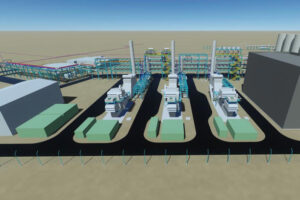How to….empower children to build their own sustainable city
By 2030, over 92% of UK citizens will live in cities, and as the recent youth strikes made crystal clear, the city dwellers of the future are deeply concerned about what sort of urban environment they will grow up into.
To help them better appreciate the positive impacts they can make, qualified youth worker Stephanie Robinson is creating an interactive model city which shows children how their energy use and lifestyle contributes to climate change.
‘We want the game to be a meeting space for different ideas for people who haven’t been asked their opinion on climate change or sustainability before,’ says Stephanie.
Asking the right questions
The interactive board includes 30 spaces that have been wired with electronics.
A player will put a model building into space which triggers a sensor, informing them of the environmental and social costs associated with their decision.
So, someone might put down a model of a swimming pool powered by renewable energy and the game board will reveal how many emissions are associated with that choice and how it is likely to improve the social fabric of a community.
Or they might put down a concrete 1960s-style tower block, which might not be so generous.
Trials of the game have seen PhD researchers from the University of Leeds sat around the game board with 13-year-old school children, rationalising why they made certain decisions and discussing what buildings will improve or worsen the economic, environmental and social prospects of their city.
‘Children don’t have to have all the answers but what they’re really good at is asking the right questions,’ says Stephanie, who hopes to take the game around schools in her home county of West Yorkshire and beyond.
‘What we’re trying to do is use technology and coding to talk about climate change in a new and interesting way,’ she adds.
Stephanie was given a grant from the Joseph Rowntree Charitable Trust to develop the prototype, and she’s now launched a crowdfunder to raise the cash for three new game boards, with all the emissions figures sourced from Leeds Can-do Cities data.
Stephanie says its living, breathing example of how energy, climate change and social inequality are interlinked.
‘People say make an online version, but what happens is the conversations around that table. You get the sense that this is the first time people have been able to chat about it. ‘
‘So to play around with a city that has data with it and create a positive vision is reassuring and soothing.
Emotional responses
Stephanie says the game has already elicited some emotional responses.
At a workshop, she recalls speaking to a group of children who said they feel responsible for climate change but are powerless to do anything about it.
She also believes that children’s mental health is suffering due to concerns about climate change.
‘That’s really tough,’ says Stephanie.
But through the game, she believes for the first time many young people can picture themselves as part of a sustainable future.
Another function of the game is to empower adults and show them how they can better understand and listen to young people’s voices.
‘As adults, we often feel powerless on how we help young people,’ she adds.
If the crowdfunding campaign is successful, the three new boards will represent different scales. One will be UK wide, one city based and another on a street level.
However, the complex coding, design and electronics are not cheap, with each board costing around £2000.
But Stephanie is optimistic, and pictures groups of 10 children or more around each one, playing with it and having a conversation with the board next on how actions on one level relate to a larger scale.
Deeper and faster
A recent report from the Leeds Climate Commission said Leeds needs ‘deeper and faster’ emissions cuts if it is to become carbon neutral by 2050.
So perhaps officials at Leeds City Council should sit around one of the game boards and learn from their city’s younger residents on how best to meet that challenge.
Stephanie wants the next version of the game to look more deeply at the different environmental, economic and social issues and shows the complex relationships between them.
‘Focusing on social issues is the best way to engage young people on climate change. They have a lot to say on these issues.’
‘We want to show how grassroots action and campaigning for change at a national level work hand in hand. We want to expose how structural inequality has caused climate change, and what society looks like when we respect and support everyone.
‘We want to zoom in to a street level and show you what a fair, sustainable society looks like from your living room window.’















